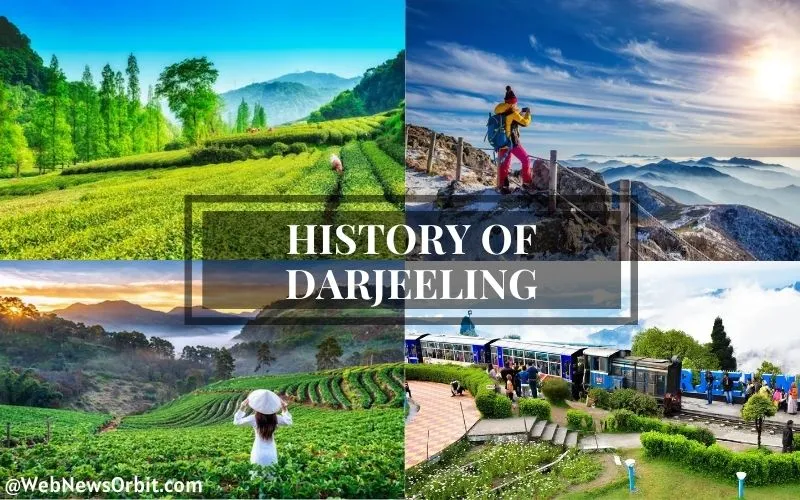Darjeeling an idyllic hill station tucked away within Eastern Himalayas is awash with an interesting and fascinating story that has formed its distinctive cultural tapestry and distinctive identity.
From its beginnings as a serene refuge through its colonial history, and eventually, its development, the history of Darjeeling is an exciting journey through the ages.
{getToc} $title={Table of Contents}
In this piece, we'll dig into the history of Darjeeling by exploring its early residents, British colonial influence, the development of the tea industry and its current appeal.
The Indigenous Roots
Darjeeling's past dates back to the tribes of the past who inhabited the region for a long time before the emergence of its fame.
It is believed that the Lepcha inhabitants were among the first inhabitants who coexisted peacefully in the lush forest and peaceful landscapes.
British Colonial Exploration
Darjeeling's enticing weather and stunning views caught the interest to people from the British East India Company in the 19th century.
They believed in an opportunity in Darjeeling as an ideal hill station to get away from the heat of Indian summer.
Rise of Tea Plantations
One of the most significant events in the history of Darjeeling was creation of tea plantations in the middle of the 19th century.
The British acknowledged the region's potential for tea cultivation, which led to the development of some of the highest-rated teas.
The Darjeeling Himalayan Railway
The wonder of engineering The marvel of engineering, that is Darjeeling Himalayan Railway, fondly called "Toy Train" it was constructed during the colonial period.
The narrow-gauge railway is an iconic symbol of the history of Darjeeling and provides breathtaking journeys through the picturesque scenery.
Colonial Legacy and Cultural Fusion
The British colonial influence left a permanent mark on the Darjeeling's architecture, education and its culture.
The town was an amalgamation of many communities, such as Tibetans, Nepalese, and Bengalis which resulted in a unique mix of cultures and customs.
Struggle for Identity
Post independence, Darjeeling witnessed movements advocating for Gorkhaland as an autonomous region that belongs to members of the Gorkha community.
These movements emphasized the complex regional socio-political complexities.
Tourism Boom
Darjeeling's tranquil beauty and a the pleasant climate continue to draw tourists from all over the globe.
The charming town, along with its historic significance has made it a sought-after spot for tourists seeking a respite from the hustle and bustle of city life.
Challenges and Conservation Efforts
The rising popularity of Darjeeling caused challenges like the rise of urbanization along with environmental degrading. Conservation efforts have been launched to protect the beauty of the area and its diversity.
Darjeeling Today
Today, Darjeeling remains a haven for outdoor enthusiasts and lovers of nature. The vibrant markets, breathtaking perspectives, and the diversity of its culture are the reasons to visit it.
Conclusion
The story of Darjeeling is a woven tapestry with the indigenous culture along with colonial legacies and aspirations for the future.
Beginning as a humble refuge to its current status as a tourist hotspot in the world Darjeeling's history is a testament to perseverance of a place that continues to amaze and invigorate.
Frequently Asked Questions
Q1 What year was Darjeeling founded as an hill station?
A: Darjeeling was established as an hill station in around the turn of the century. It was founded by the British East India Company.
Q2: What's what is the value of Darjeeling Himalayan Railway?
A It is known as the Darjeeling Himalayan Railway an UNESCO World Heritage Site and an emblem of Darjeeling's past and engineering expertise.
Q3 What did the cultivation of tea affect the history of Darjeeling?
A tea plantation, a practice established by the British and later by the British, was a key element of Darjeeling's economy as well as its its global fame.
Q4: What issues does Darjeeling confront today?
A: Darjeeling grapples with urbanization environmental concerns, urbanization, and the preservation of its culture heritage.
Q5 What is the way that Darjeeling's population has changed in the past?
A: The population has increased significantly thanks to its popular status as a tourist spot and its appeal to a diverse population.

